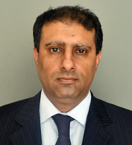This is a simple adage, which, despite its universal application, is identified more with the mutual fund industry than with general philosophical statements. Its applicability to business provides food for thought especially since most entrepreneurs prepare for succession while looking in the rearview mirror and aim only to pass on the business they have created.
A Story
To illustrate, let me share an instance narrated by a former colleague. This particular person, say, Venkat, was working with a finance company in a specific field. He was successful and had grown to be the regional head in a short time. Another financial institution decided to venture into the field in which Venkat was working. Since Venkat was one of the more successful and senior persons in the field, the new financial institution (FI) asked him to join and be part of the core team starting the business.
The offer was attractive, and Venkat soon found himself with the FI. A project team was formed and asked to make a presentation on projected financial results for the next three-five years in this field. The core team finalized the project and chose a day for presenting to the management of the FI.
Much to the amazement of the project team, all the directors, managing director, CEO, everyone in the top echelons filed into the board room to hear the presentation. Venkat, having been chosen the leader, started. On the second slide, he was stopped by the chairman. On a sign from the chairman, the managing director addressed the project team and said these projections were unacceptably low and did not match the expectations for the business.
The managing director said that Venkat and team had relied on past experience and how the industry <strong>had been</strong> performing to arrive at an achievable market share. This was all very well, but this was not the reason the FI had considered entering this field. If these were the projections, they were not interested in the field.
Venkat, trying to show confidence, argued and asked how the managing director would project it. The managing director began by saying that they had to look at the total population in the country. Since the country’s GDP growth rate had broken from past trends. If the growth rate continued at the same pace, then they should use this rate to extrapolate the delta discretionary income between now and three to five years. They should then work on the probability of this extra discretionary income translating into a demand for the new service. He shared his projections using these metrics, and his projections were 20x the projections made by the project team.
An Ending
Fast forward five years. Venkat shared that, give or take a few percentage points, the numbers projected by the managing director were what they achieved. Or taking another example, which I came across recently, the CEO of Motorola commented after the launch of the iPod Nano – “Who needs to store 1000 songs?”
Businesses are not founded on the basis of incremental growth. That is a later stage of life. They are achieved on a path-breaking insight. Projecting the success or failure of a business, as most business people now acknowledge, is never based on past trends but on an extrapolation of what can come to pass.
Yet, in the succession planning field it’s always the past performance which is planned for. The usual question is “How do I pass on the wealth created by me?” If past performance is no guarantee of the future, then should one focus only on creating structures for passing on the static wealth? Or should the structure allow for more?
Some Ideas
Most Indian families have started talking about issues related to inheritance and usually adopt a tick the box approach.
- Write a Will – tick
- Set up a trust – tick
Succession planning, to my mind, has to treat existing wealth as the foundation and extrapolate its future using the following variables:
- Industry trends and disruptions
- Company’s future
- Family’s continued involvement with the company
It is here that a true succession planning dialogue differs by involving the next generation and asking, among others, the following:
- Is the industry going to survive in the changing landscape? What are the regulatory challenges in the foreseeable future?
- Will control cross the border into interference?
- Do you see the family continuing in this industry? How long? What will make us sell?
- How to accommodate the change in cultural mores and laws into the succession plans?
- What is the emotional connection that family members have with business? What does it represent to them?
- Is the emotional connection making the family oblivious to operating conditions or aspirations of next generation?
- How does next gen see the company’s prospects?
- What is the capability and execution gap between the actual and the required?
- What is going to be the governance style and management?
- How does one select board members? What is the role of promoters in selecting board members?
- If the next gen is too young, then how to get it ready for the future?
- What should be your role in the company?
- What should be the role of professionals?
- Can one maintain control over business while not being involved in management?
- What would you do with the money if we sell out?
- If you are the sole charge of the company, how do you envision it 10-20 years down the line?
And many more…
Some Observations
In succession planning, it is often assumed that the management structure which worked in the past will continue in the future — while research (and gut feeling) tells that the existing structure focuses on incremental improvements as there is too much at stake to cause disruption. Disruption causes stress, therefore no professional manager (and quite a few business owners) like disruption least of all the risk management industry, as it challenges their conception and existence. Yet new businesses and profitable ideas are borne out of challenging the status quo.
Succession planning should ideally focus on:
- Creating a vision for future of the family and its relationship with the business
- Developing a roadmap on how to achieve the vision
- Identifying the resources required to achieve the vision
- Agreeing on the management and governance structures required to achieve the vision
- Deciding on the family’s role in achieving this vision
Succession is a process that unfolds over a span of 10-15 years. Addressing these, as well as additional, questions is one step in managing the process. A structure to house the ownership of the assets is incidental.
About the contributor
 Ashvini Chopra is senior vice president, family office, at Bennet Coleman, in Mumbai, India. He has more than 23 years of experience — six years have been as an estate planning professional and more than seven years as a private banker. His focus areas are succession planning, tax planning, wealth management, lifestyle management, entity management, and advising on board constitutions. Ashvini’s previous Practitioner article, Selling the Family Business? Set up a Family Office First! was one of the five most read in this year. A member of FFI and STEP, Ashvini can be reached at ashvinichopra@gmail.com.
Ashvini Chopra is senior vice president, family office, at Bennet Coleman, in Mumbai, India. He has more than 23 years of experience — six years have been as an estate planning professional and more than seven years as a private banker. His focus areas are succession planning, tax planning, wealth management, lifestyle management, entity management, and advising on board constitutions. Ashvini’s previous Practitioner article, Selling the Family Business? Set up a Family Office First! was one of the five most read in this year. A member of FFI and STEP, Ashvini can be reached at ashvinichopra@gmail.com.





